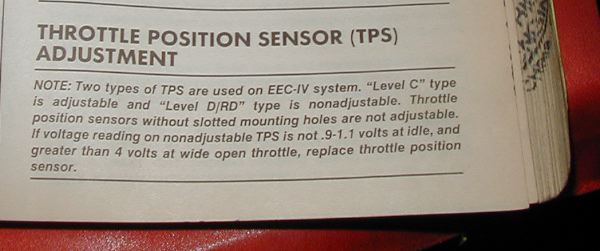What is the best way to set the tps sensor?

Reply #35 –
So the TPS was above 1V in the first place, then suddenly it would idle high, but just cycling the key or adjusting the TPS lower would 'fix' it? I did notice that the DELTA (part throttle voltage above closed throttle) for the turbocoupe models is 0.07 volts which is higher than most other models - perhaps the "Level C" type TPS unit mentioned in the link in one of the above posts (which was also 'adjustable') has more thermal drift or forms flat/dead spots more easily at idle. I wouldn't be surprised if a 22 year old sensor had some wear.
The fact that the TPS voltage was above 1V before you had an issue supports what I've been saying all along, actually, since the car was running fine before you had an issue. Since cycling the key or moving the TPS position (i.e., when you lower the voltage) changes the wiper position of the TPS, that tends to support the idea of a flat spot forming in the TPS where the wiper might bridge more than one winding and thus put the car in part-throttle mode just from vibration or heat.
Note this picture directly from the Ford manual:

"If the voltage reading on a nonadjustable TPS sensor is not 0.9 - 1.1V at idle, and greater than 4V at WOT, replace throttle position sensor."
Clearly the TPS was intended to be @ 1V +/- 0.1V at idle. It would be unwise to suggest that Ford didn't know how their own engine controls worked.
 Topic: What is the best way to set the tps sensor? (Read 5448 times)
previous topic - next topic
Topic: What is the best way to set the tps sensor? (Read 5448 times)
previous topic - next topic
